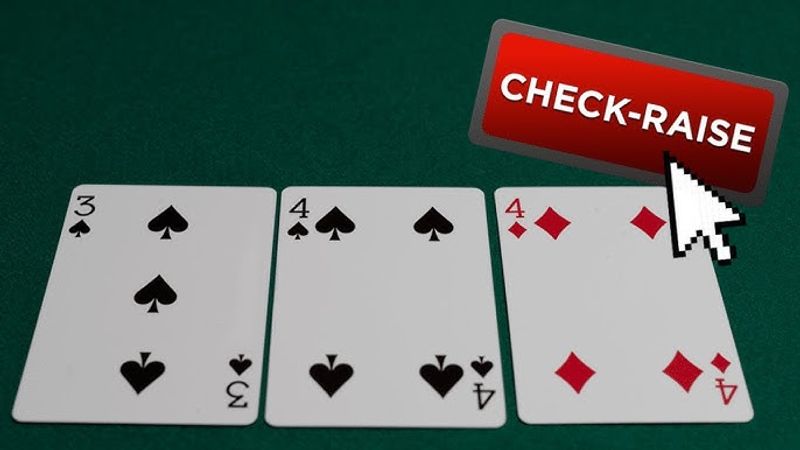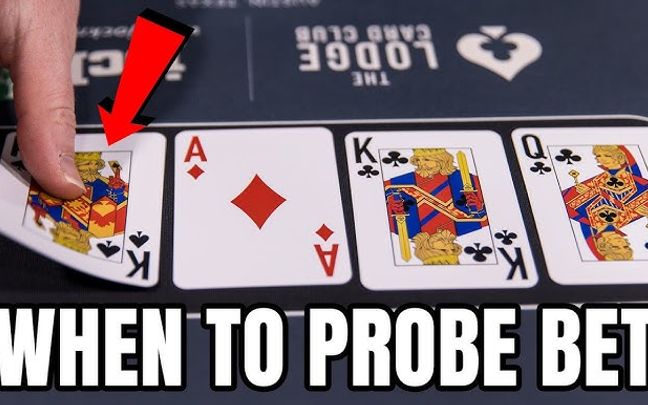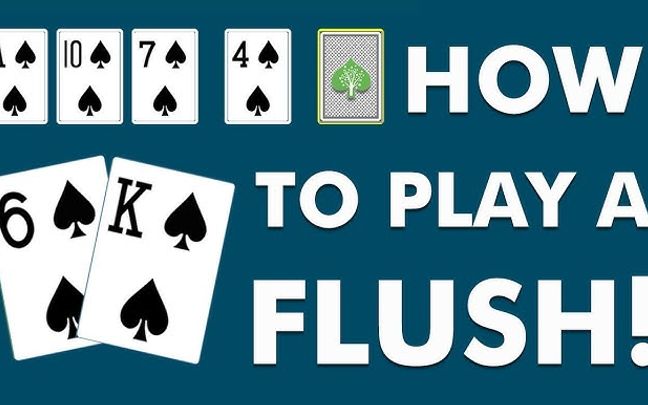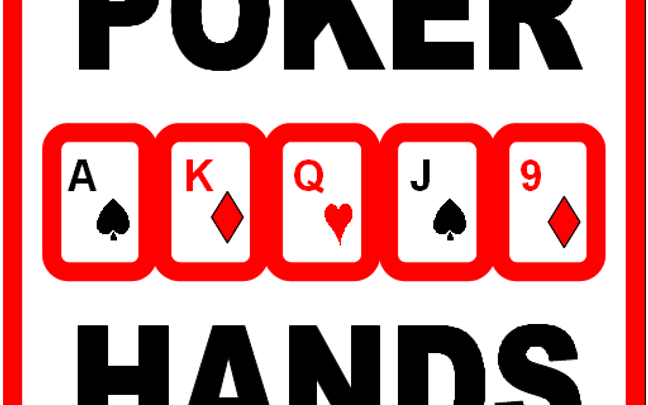The check-raise on the Flop is a key strategy in poker, allowing you to apply pressure and skillfully control the hand. It’s not only a method to increase the pot when holding a strong hand but can also be used to bluff opponents.
This article will help you understand how to effectively employ the check-raise strategy on the Flop.

What is a Check-Raise on the Flop in Poker?
A check-raise on the Flop is a commonly used poker strategy. It involves a player initially checking (choosing not to bet) with the hope that an opponent will bet. Then, after the opponent bets, the player raises.
This check-raise strategy on the Flop can be applied in various situations, targeting different strategic goals.
How Check-Raise Works on the Flop
In poker, the Flop round occurs after three community cards are dealt face up on the table. When it’s your turn, you can decide not to bet by simply “checking,” meaning you neither contribute more money to the pot nor fold. After your opponents place their bets, you then have the option to increase the bet size, which is known as a “check-raise.”
Objectives of a Check-Raise on the Flop
-
Deceive Opponents into Betting: One primary goal of a check-raise on the Flop is to make opponents think you don’t have a strong hand, encouraging them to bet. You can then raise, aiming to make them fold or increase the pot’s value.
-
Increase Pot Value with a Strong Hand: If you hold a strong hand, like a high pair or three-of-a-kind, you may want to build a larger pot. A check-raise on the Flop lets you increase the pot size after your opponent has already contributed, maximizing profit with your strong hand.
-
Test Opponents’ Hand Strength: A check-raise on the Flop can also serve as a way to test whether your opponents have strong or weak hands. By raising after checking, you force your opponent to decide whether they want to continue. If they do, it may indicate they have a strong hand, allowing you to adjust your strategy accordingly.
Psychology and Impact of a Check-Raise on the Flop
A check-raise on the Flop often adds unpredictability and pressure for your opponents. Checking and then suddenly raising forces opponents to carefully reevaluate their hands. This tactic can create confusion and may lead to mistakes.
Furthermore, executing a check-raise on the Flop signals that you have good hand-reading skills and are playing actively, creating a formidable image at the table.
However, a check-raise on the Flop isn’t always the best strategy. If used too frequently, opponents may catch on and adjust their playstyle. This tactic requires careful timing and choosing the right opponents to achieve optimal results.

When Should You Use a Check-Raise on the Flop?
A check-raise on the Flop is a powerful strategic tool in poker, but it’s not always appropriate to use. Here are some specific situations where a check-raise may be advantageous.
When You Have a Strong Hand
One of the optimal times to use a check-raise on the Flop is when you hold a strong hand.
For instance, if you have a high pair, three-of-a-kind, or a potential straight or flush from the Flop, you can put pressure on your opponent by using a check-raise. In this case, checking initially conceals the strength of your hand and may lead your opponent to believe you’re weak. When they bet, you have the opportunity to raise, drawing more money into the pot. This not only helps build a larger pot but also forces your opponent into a tough decision.
When You Want to Bluff
A check-raise on the Flop is also effective when you want to bluff. In this situation, you don’t have a strong hand but intend to pressure your opponent to fold.
Using a check-raise on the Flop here can make your opponent believe you’re holding a stronger hand, potentially causing them to think they have little chance of winning. When you sense that your opponent may fold under pressure, this tactic can yield great benefits. However, to bluff successfully, you need confidence and a keen sense of how your opponent reacts under pressure.
When Opponents Tend to Bet Continuously
Another reason to use a check-raise on the Flop is when your opponent has a tendency to bet consistently.
Some players have the habit of betting whenever possible, regardless of hand strength. If you observe that your opponent often does this, a check-raise on the Flop can be an excellent way to exploit this tendency. Start by checking to encourage them to bet, and then execute a check-raise to increase the wager. This not only puts pressure on your opponent but also allows you to build the pot without revealing your hand.

A check-raise on the Flop can be a highly beneficial strategy when used at the right time and in the right way.
Knowing when to execute a check-raise on the Flop will help you control the game and maximize profits from strong hands. It can also serve as an effective tool for bluffing and putting pressure on opponents. However, for it to succeed, you need to accurately read the situation and understand your opponent's playing style.






















